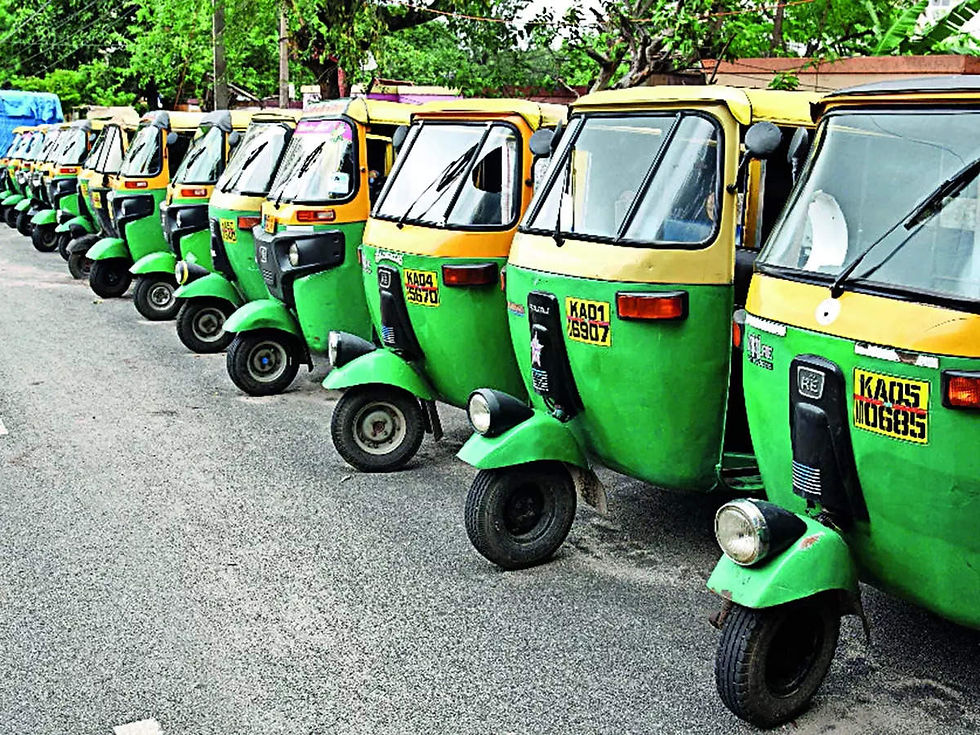The New Ride Order
- connect2783
- Jun 22, 2023
- 2 min read
Updated: Jul 18
With app-based ride-hailing services facing challenges from both driver unions and local competitors, a new wave of mobility solutions are emerging in smaller cities like Guwahati. From homegrown apps to state-backed initiatives, the landscape is shifting rapidly. How will this disrupt the duopoly of giants like Ola and Uber? Can local players truly compete in the long run, or will they be swallowed by bigger forces?

This year in February, Ola and Uber temporarily shut their services in Guwahati. This decision was influenced by the driver unions, who claimed that aggregators were harassing the drivers by charging exorbitant commission fees for rides booked. Two local cab operators, Pei India and AN2, were operational in the city instead.
... smaller upstarts, category-specific business models, and traditional players are emerging to break the duopoly of two giants [Ola and Uber].
Like in Guwahati, smaller upstarts, category-specific business models, and traditional players are emerging to break the duopoly of two giants. As urban mobility gradually recovers from the Covid-19 pandemic’s impact, companies like Rapido in the auto and bike segment and BluSmart with their electric car fleet in Delhi-NCR have joined the race.
Many states, including West Bengal, Assam and Kerala, are developing their own app-based cab services, while many cities have also come up with their own local ride-hailing apps, like Kochi’s taxi-service app ‘Yatri’, which was launched by Kochi Metropolitan Transport Authority.
The auto unions have also started developing their own apps to compete in this market, like app ‘Namma Yatri’ in Bangalore and Ernakulam Auto Drivers Cooperative’s app ‘AuSA’ in Greater Kochi. Local self-developed apps grant drivers increased autonomy and retain their earnings by eliminating commission cuts.
The Open Network for Digital Commerce (ONDC) has also expanded into the mobility sector by partnering with open-source platforms Namma Yatri and Yatra. Unlike traditional platforms, these partners do not charge any commission from drivers.
ONDC’s open mobility initiative aims to allow customers to book rides from multiple apps and, in the future, integrate various modes into a single platform. Currently, the project is in the Alpha Phase in 181 cities in India.
This evolving landscape in the mobility market of small cities reflects the growing opportunities for diverse players and competition. The entry of new companies, state-backed initiatives and localised services indicates a dynamic and disruptive shift in the sector, providing commuters with more choices and potentially reshaping the market dynamics in the long run.





Comments